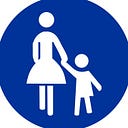Some land use stats for District 4

I started writing (again… long story) after the D4 Mandatory Housing Affordability hearing— so I didn’t get the chance to look up much in the way of land use and tenancy stats other than those I mentioned in my testimony. But it’s important to framing an honest conversation. One of the things homeowners repeated ad nauseum at the D5/D6 hearing was that the city needed to listen, ‘to the community’ (and fellow homeowners would whoop and cheer loudly in agreement). But the thing homeowners seem to forget (or perhaps intentionally ignore) is that all but two urban villages in the entire city, where new housing is largely directed, are majority renter. So yes, it’s important to talk with community — but it’s also important to acknowledge that renters are a significant and underrepresented portion of said community (which is why the renter’s commission was long overdue), and that three and a half hour public hearings are in no way representative.
So speaking of urban villages — all the urban villages in D4 are majority renter. And it’s not even close. In 2010, Wallingford was 60% renter, Ravenna was 96%, University District was 94%, Eastlake was 70%, and Roosevelt was 54%. Given the rate of apartment construction in most of these UVs, those numbers have likely increased. The median age of D4 is 32.5. You wouldn’t believe this if you went to community council meetings regularly.
District 4 has 6,110 gross acres. Of that 6,110 — right of ways constitute 1,577 acres — 26% of this dense district is dedicated to cars and car storage. Might be time for some pedestrianized streets. As with other districts, much of this ROW is on-street parking in single family zones, which make up 48% of the net land acres of D4.
Guess how much of D4 is zoned for multifamily? A whopping 418 acres — less than District 6. Just for scale — the Sand Point Country Club is 88 acres. D4 has over five times as much land zoned for detached, sprawling homes as attached ones. Most of the growth capacity is on arterials on Commercial and Neighborhood Commercial parcels. There is more land reserved for city-owned open space (most of it outside the urban villages) at 528 acres, than multifamily.
This also means 86% of all residentially-zoned land in District 4 is zoned single family — that is, it is zoned to exclude affordable housing. The lack of multifamily zoned land here is devastating to those who are unable to buy or afford increasing rents. There are many who claim Seattle has ‘adequate zoning capacity’ — it is not a coincidence that most of these people are not renters struggling with rising rents and few options because new housing is illegal in most of the city.
Parks and open space are also a major spatial inequity in D4: there is a massive open space deficiency against multifamily housing especially in urban villages. The largest park in the Wallingford Urban village is 68% single family zoning within a half mile. University Playground in the U District UV is 51% single family zoning within a half mile. Ravenna Park is 68% single family zoning within a half mile. Froula Playground is 76% single family. The remaining parks — including Magnusson, are all above 80% (most are above 90%) single family zoning within a half mile. All these numbers are from the excellent, eye-opening @sightline article, ‘Opening Parks to More Seattleites’
There are only 3 parks in D4 that are more than 50% multifamily within a half mile: Rogers Park, Gas Works Park, and Ravenna Woods. MHA goes a small way in starting to address some of those massive inequities. But we will need to go big, and be much bolder to address these massive spatial inequities.
